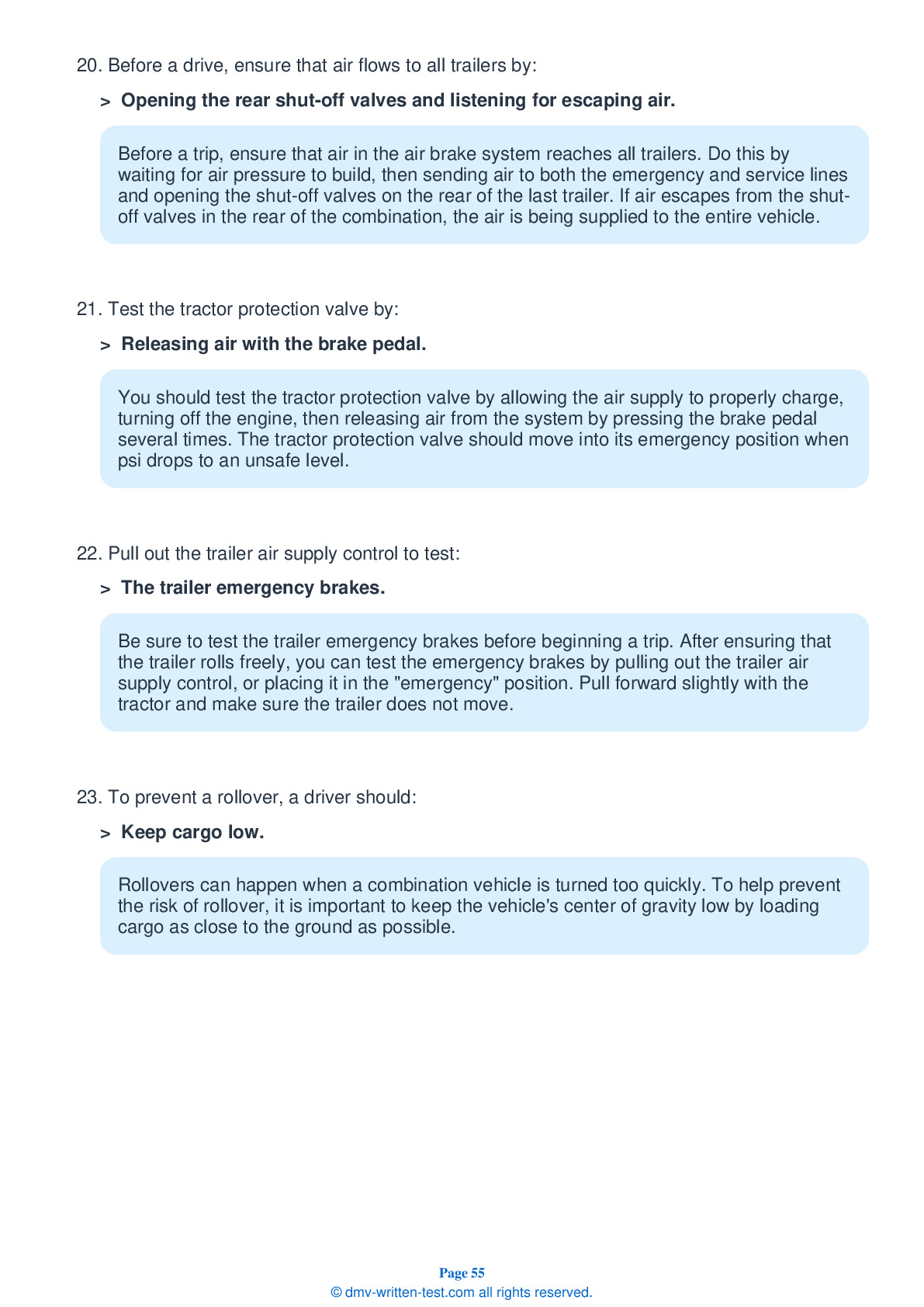Air Brakes
This endorsement is required for driving a vehicle with air brakes. To receive this endorsement, applicants must pass a written test. The test consists of 25 multiple choice questions. Each question has two, three or four possible answer choices. To pass, the applicant must answer at least 20 questions correctly. Test questions come from the Minnesota Commercial Driver’s Manual. Questions come from the chapters covering: Air Brakes and Combination Vehicles. The Air Brakes endorsement may be used with the Class A, B or C CDL.
Number of Question
Passing Score
1. At what psi is the safety valve set to open?
Explanation
In an air brake system, the first tank that receives compressed air has a safety valve that releases air if the pressure gets too high. It is usually set to open at 150 psi. If the valve must open, there is a fault in the system that should be repaired by a mechanic.
2. While inspecting a coupling, you should go under the trailer and:
Explanation
While inspecting a coupling, you should go under the trailer and look into the back of the fifth wheel. Ensure that the fifth wheel jaws are secured around the shank of the kingpin.
3. What is a bobtail?
Explanation
Tractors without semi-trailers are referred to as bobtail tractors. Operating a bobtail tractor requires drivers to exercise caution.
4. When backing up while coupling a trailer, the tractor should be positioned:
Explanation
When backing up to couple a trailer, you should position the tractor directly in front of the trailer. Trying to couple while backing at an angle could cause the trailer to move and the landing gear to break.
5. When you press the brake pedal in a vehicle with S-cam brakes, air pressure pushes out the rod and moves the:
Explanation
When pressing the brake pedal in a vehicle with S-cam brakes, air will enter the brake chambers. The added air pressure will push out the rods and move slack adjusters, twisting the brake camshafts.
6. Maintain a following distance of at least ____ for every 10 feet of your vehicle if you are traveling at a speed under 40 mph.
Explanation




